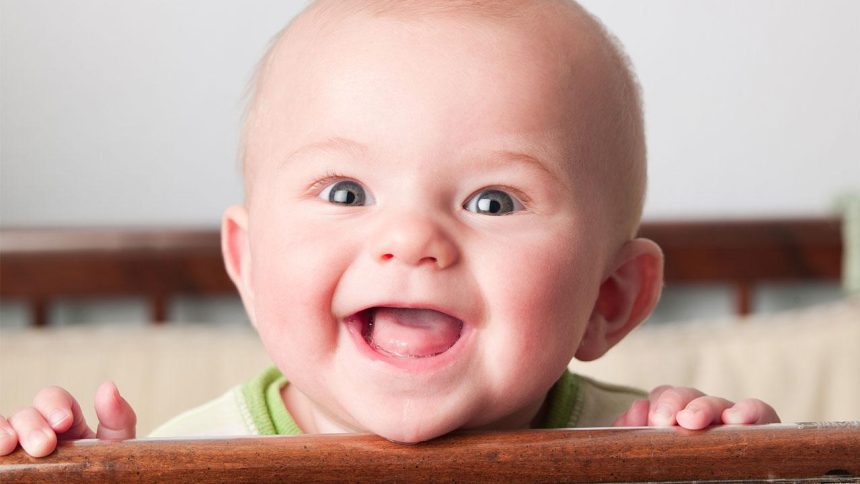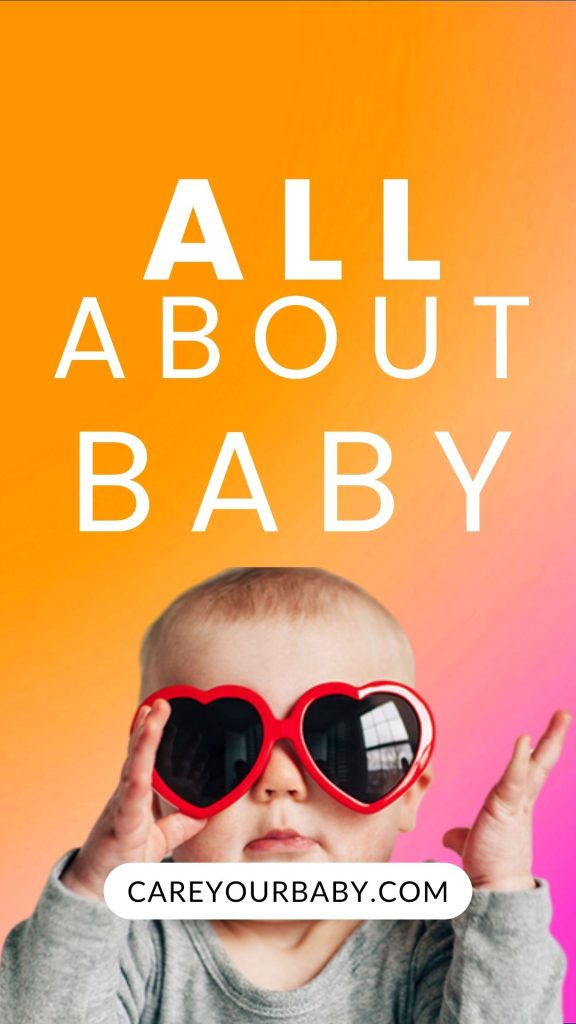In the realm of infant development, seemingly peculiar behaviors often spark both curiosity and concern among caregivers and researchers alike. One such behavior that has garnered attention is the tendency of some infants, particularly around the age of nine months, to throw their heads back in an abrupt and often dramatic fashion. While this action may appear alarming to onlookers, understanding the underlying motivations and developmental significance of this behavior is crucial for parents and professionals alike. This article seeks to elucidate the various factors that contribute to this phenomenon, exploring the interplay between physical development, neurological growth, and emotional expressions. By delving into current research and expert opinions, we aim to provide a comprehensive overview of this intriguing aspect of infant behavior, offering insights that can aid in both reassuring caregivers and informing best practices in pediatric health and early childhood development.
Understanding the Developmental Milestones Associated with Head-Throwing Behavior in Infants
The behavior of head-throwing in infants, particularly around the age of nine months, is a phenomenon that warrants careful consideration. At this developmental stage, infants typically exhibit a surge in physical coordination and motor skills, leading them to explore their environments more dynamically. Head-throwing can manifest as a playful gesture or a means of expressing excitement. The behavior may also serve as a way for infants to strengthen their neck and back muscles, which are essential for achieving subsequent milestones such as sitting up independently and crawling.
Several factors contribute to this behavior, including the infant’s growing sense of agency and social interaction. When engaging with caregivers, throwing their head back might be their attempt to solicit attention or react to stimuli in a playful manner. It is crucial to recognize that while this behavior is often benign, it can sometimes indicate discomfort or frustration. Caregivers should observe the context in which head-throwing occurs and consider key aspects such as:
- Frequency: Is it a one-off event or a repeated behavior?
- Environment: Are there specific circumstances that trigger this behavior?
- Associated behaviors: Does it accompany other signs of distress or joy?
Examining the Possible Psychological and Emotional Triggers for Head-Throwing at Nine Months
Understanding the behavior of infants can be complex, especially when they exhibit unusual actions such as head-throwing. At nine months, this behavior may stem from a variety of psychological and emotional triggers. Infants are in a critical stage of development, and their interactions with the environment contribute significantly to their emotional responses. For some babies, head-throwing may be a **self-soothing mechanism**, where the act provides a calming effect in moments of distress or overstimulation. It can also be a form of **exploratory behavior**, as infants are beginning to discover their bodily capabilities and might enjoy the physical sensation of movement.
Additionally, head-throwing can be an expression of **frustration or communication**. As infants struggle to articulate their needs, they may resort to physical expressions to signal discomfort or a desire for attention. This behavior could also be linked to emotional regulation, as some babies experiment with their reactions to different stimuli. Factors such as **environmental stressors**, changes in routine, or overstimulation can exacerbate this behavior. Here are some possible triggers to consider:
- Overstimulation: Excessive noise or activity in the environment.
- Frustration: Difficulty in expressing needs or desires.
- Seeking attention: An attempt to engage caregivers.
- Emotional discomfort: Responses to unfamiliar situations or changes.
| Trigger | Description |
|---|---|
| Overstimulation | Excessive sensory input causing distress. |
| Frustration | Inability to communicate needs clearly. |
| Attention Seeking | Desire for engagement from caregivers. |
| Emotional Discomfort | Reactions to new or stressful experiences. |
Practical Strategies for Parents to Address and Manage Head-Throwing Behavior
When addressing head-throwing behavior in infants, it is essential for parents to adopt a proactive approach that caters to the underlying causes of this action. Understanding that this behavior can stem from a variety of factors, including sensory exploration, emotional expression, or discomfort, is critical. Parents can implement the following strategies:
- Create a Safe Environment: Ensure that the area surrounding the baby is free from hard surfaces and sharp objects to minimize injury risk.
- Monitor Emotional States: Pay close attention to the contexts in which the behavior occurs; this can help identify triggers.
- Provide Distractions: Offer toys or engage in activities that redirect the baby’s attention, particularly during moments of frustration or excitement.
- Use Calming Techniques: Techniques such as gentle rocking or soothing sounds can help alleviate anxiety that may lead to head-throwing.
Moreover, developing effective communication with healthcare professionals is vital for parents when managing this behavior. By establishing a collaborative relationship with pediatricians or child psychologists, they can gain insights into individualized strategies that align with their child’s specific needs. Consider maintaining a Behavior Log to track instances of head-throwing, noting the time, situation, and responses. This data can provide valuable context for consultations.
| Trigger | Suggested Response |
|---|---|
| Frustration | Offer support and encouragement; use comforting words. |
| Overstimulation | Introduce a quiet space to help the baby relax. |
| Discomfort | Check for signs of hunger, tiredness, or diaper rash. |
When to Seek Professional Guidance: Red Flags in Infant Behavior and Development
While infant behavior can vary widely, certain patterns may indicate the need for professional consultation. If your 9-month-old is consistently throwing their head back, particularly if it is accompanied by other concerning behaviors, it could signal underlying issues. Parents should be vigilant and consider reaching out to a healthcare professional if they observe any of the following:
- Repeated incidents: If the head-throwing happens frequently and without apparent reason.
- Accompanied by distress: If the behavior is linked with unusual crying, signs of discomfort, or distress.
- Developmental delays: If there are noticeable setbacks in milestones such as crawling, sitting up, or social interaction.
- Changes in feeding or sleeping: If the behavior coincides with significant changes in appetite or sleep patterns.
Additionally, it is important to consider parental intuition. If you feel that something is amiss, even if your observations don’t align with common red flags, it’s always best to consult with a pediatrician. A professional evaluation can help rule out any serious concerns and provide you with the necessary reassurance. Below is a simple table that details some of the behaviors to monitor:
| Behavior | Action Needed |
|---|---|
| Frequent head throwing with no cause | Consult a pediatrician |
| Distress during head throwing | Seek immediate advice |
| Other developmental concerns noted | Schedule a developmental assessment |
| Changes in routine or behavior | Discuss with a healthcare provider |
Q&A
Q&A: Understanding the Behavior of Babies Throwing Their Heads Back at 9 Months
Q1: What does the behavior of a baby throwing their head back at 9 months typically signify?
A1: Throwing the head back is a common behavior observed in infants around the 9-month mark. This action can indicate a variety of developmental milestones, including the exploration of physical boundaries, self-expression, and the development of motor skills. At this stage, infants are beginning to gain more control over their bodies and are experimenting with how to move, which can manifest in behaviors such as arching their backs or throwing their heads backward. Additionally, it may signal emotional expression, including joy or frustration, as babies learn to communicate their feelings through physical actions.
Q2: Is this behavior a cause for concern for parents?
A2: In most cases, the behavior of throwing the head back is not a cause for concern. It is a normal part of development as infants experiment with movement and spatial awareness. However, if the behavior is accompanied by signs of distress, excessive difficulty in motor control, or if the child seems unresponsive to social interactions, it may warrant further evaluation by a pediatrician. Parents should trust their instincts and consult healthcare professionals if they have concerns about their child’s behavior or development.
Q3: How can parents respond to this behavior effectively?
A3: Parents can respond to this behavior with a combination of observation and engagement. It is beneficial to create a safe environment where the baby can explore different movements without risk of injury. Encouraging supervised playtime can help infants practice motor skills and gain confidence in their movements. Additionally, positive reinforcement when the baby engages in desired behaviors can aid in their emotional development. For instance, responding to their expressions of joy with laughter and affection can help reinforce their self-expression.
Q4: What are some associated developmental milestones at 9 months?
A4: Around 9 months, infants typically reach several significant developmental milestones. These include increased mobility, such as crawling or scooting, improved hand-eye coordination, and the ability to sit confidently without support. Socially, babies may display attachment behaviors, such as showing preferences for caregivers and demonstrating separation anxiety. Additionally, they may begin to experiment with vocalizations, recognizing their name, and understanding basic cause-and-effect, which includes physical actions like throwing their heads back to elicit reactions from others.
Q5: How does this behavior fit into the broader context of infant development?
A5: Throwing the head back can be understood within the broader framework of infantile motor development and emotional regulation. As infants grow, they are not only mastering physical skills but also learning to navigate their emotional landscapes. Gestures like throwing their heads back can be a way for them to express excitement, seek attention, or even communicate discomfort. This behavior also reflects their growing awareness of cause-and-effect relationships, as they learn that their actions can elicit reactions from caregivers. Thus, it is beneficial for parents to recognize such behaviors as integral to the holistic development of their child.
Q6: What resources are available for parents seeking to understand their child’s behavior further?
A6: Parents seeking to understand their child’s behavior can turn to a variety of resources, including pediatricians, child development specialists, and certified child psychologists. Books on infant development, parenting workshops, and reputable websites focused on child health can also provide valuable insights. Community support groups for parents can be beneficial as well, fostering an environment for sharing experiences and strategies for understanding and responding to typical infant behaviors.
Concluding Remarks
the behavior of babies throwing their heads back at nine months is a multifaceted phenomenon that warrants careful consideration from caregivers and health professionals alike. This seemingly innocuous action may reflect a range of developmental milestones, including the exploration of bodily autonomy, expression of emotion, and the burgeoning understanding of spatial awareness. Moreover, such behaviors can serve as important indicators of a child’s cognitive and motor development, providing valuable insights into their overall growth trajectory.
As parents and caregivers navigate the complexities of infant behavior, it is essential to remain attentive to contextual factors and individual differences. While occasional head-throwing can be a normal part of exploration, persistent or extreme manifestations of this behavior may necessitate a consultation with a pediatrician or child psychologist. By fostering a supportive and observational environment, caregivers can help infants safely explore their bodily capabilities while also setting the stage for future developmental achievements.
Ultimately, a nuanced understanding of this behavior not only enhances our comprehension of infant psychology but also underscores the importance of responsive caregiving in promoting healthy development. As research continues to evolve, ongoing dialogue among specialists in child development, psychology, and pediatric care will be crucial in demystifying the rich tapestry of behaviors exhibited by infants as they navigate their early months of life.


